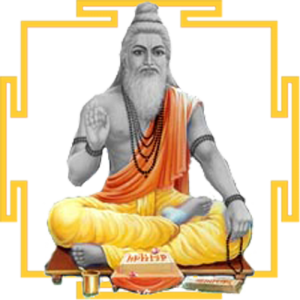 Welcome to the second year of the Parāśara Jyotiṣa Course.
Welcome to the second year of the Parāśara Jyotiṣa Course.
Prārambha: Commencement: This is the introduction to the course and the concerned chapters of Bṛhat Parāśara Horā Śāstra. We intend to cover this from January to March.
PJC2: Varga Charts is the first group/academic year comprising of
Due to time constraints, those of you who register early will get some preliminary material to study and familiarize yourselves with the huge work load. Studying sixteen charts, as well as their variations is a big job indeed. However daunting, it is fun when learnt in the methods of the tradition.
Importance of Divisions
Vedic Astrology is known for its wide scope encompassing a multitude of systems each comprising of intricately worked paradigms that are synchronized with clockwork perfection.
भवनादिपैः समस्तं जातक विहितं विचिन्तयेन्मतिमान्।
एभिर्विना न शक्यं पदमपि गन्तुं महाशास्त्रे॥
bhavanādipaiḥ samastaṁ jātaka vihitaṁ vicintayenmatimān,
ebhirvinā na śakyaṁ padamapi gantuṁ mahāśāstre. [Kalyāṇavermā, Sārāvalī 3.12]
Kalyāṇavermā opines that Varga’s (divisions and divisional charts) are the lamps that provide enlightenment about the Bhava’s (houses) and without these (brilliant Jyotish tools) it would be impossible to venture a step into this great subject (of Vedic astrology). It is evident that the divisional charts hold the key to predictions and understanding the horoscopes.
The birth of twins provides the greatest challenge to all astrologers. The general concept that the Rāśi chart is the be all and end all of Jyotish takes a beating as the Birth Chart and sometimes even the Navāṁśa charts of twins are invariably the same, yet their fortunes, looks etc are totally different. It becomes amply clear that there is yet another chart that is far more important than the Rāśi & Navāṁśa Charts. This is the Shastyāṁśa Chart (D-60) as Parāśara gives the highest weightage to this chart under the Vimsopaka Bala scheme (20-Point strength based on divisional dignities). We must respect the teachings of the Maharishi’s for this knowledge to unfold and attempt to look beyond what our mind believes to be the final truth.
Every facet of life finds place in one of the twelve signs of the zodiac and the twelve houses of the horoscope. This results in the clubbing of many aspects in a particular house or sign thereby making the interpretation very subjective. Assigning natural lordships to planets over individual matters (Naisargika Karakatwa) supports this. For example, the fourth house rules over properties, mother, home, happiness, vehicles, formal education etc. While the examination of the Bhava may not be able to give a clear-cut picture and additional examination of the natural significator like Moon for mother, Venus for vehicles, Mars for properties, Ketu for home etc. will make the reading easier, but definitely not affirmative. This is where intuition steps in and the gifted astrologer is bailed out. If the invaluable tool of divisional chart were added, the reading would not only be accurate, but quite detailed. In fact, the ‘intuitive’ element can never be fully divorced from Vedic Astrology. But then such brilliant tools like the Varga’s work like a microscope showing the astrologer various hidden facets of the chart as well as many facts and details that would otherwise be invisible in the Rāśi Chart.
Scope of PJC Year-2
The popular ṣoḍasavarga (lit. sixteen divisions or divisional charts) is based on the hypothesis that Man (Rāśi Chart) is not divorced from his environment (Divisional charts). This primary model along with smaller schemes of Daśā Varga (ten chart model), Sapta Varga or Shad Varga has been dealt with in this course. The Vimsopaka scheme and other mathematical tools to estimate the strength of the planets, their dignities by placement in strong divisions etc, have been included in PJC Year-2. There are various methods for drawing these Divisional charts and each of these has a different usage depending on the principle behind its construction. I have attempted to cover every possible deviant model (including the various suggestions of scholars on Jaimini) along with the primary model and have also attempted to bring out their usage.
Not Included
The Divisions and D-Charts, which are outside the standard 16-Chart paradigm of Parāśara, have not been fully dealt with in this course. For example, you will learn the five types of D2 Chart (Hora Chakra) but not all types of other DCharts. The Divisional charts used by the Tajaka Astrologers in preparing the Annual (Varsha Pravesh) Horoscopy [Tajaka Varga], the Kauluka’s, Shastāṁśa and Rudrāṁśa taught by Jaimini along with the special daśā’s the Maharishi proposed for these divisional charts [Jaimini Varga], the higher divisions used in the Nāḍi works [Nāḍi Varga] as well as many other divisional charts or just divisions like the Mrityu Bhaga that I have encountered in this endless journey into Vedic Astrology has not been included in this course. There is the Jaimini Scholar Program where all these advanced models have been taught in very great detail. Students would do well to find a Jaimini Scholar to learn from in the future.
Another kind of Varga is the Astakavarga system that uses dots and dashes from the natal placement of planets to determine the relative strength of signs and planets and goes into elaborate calculations to determine their good and bad results. This is another marvelous tool for examining transits as well as Vaastu Śāstra[1]. I have touched on the subject with the hope that this knowledge leads to happier homes and better lives. This will be taught in great detail in a later year of PJC.
[1] Vedic architecture.



